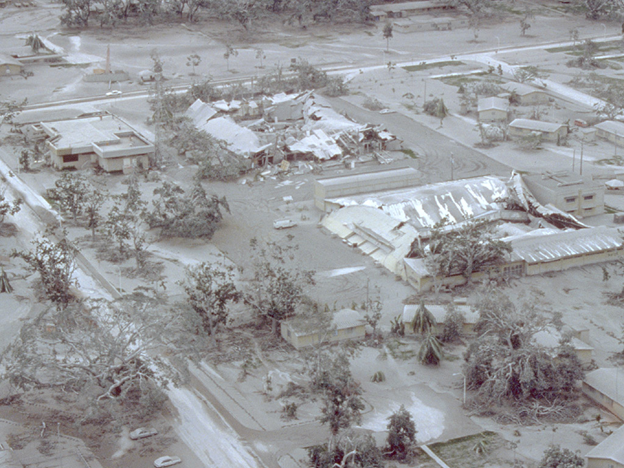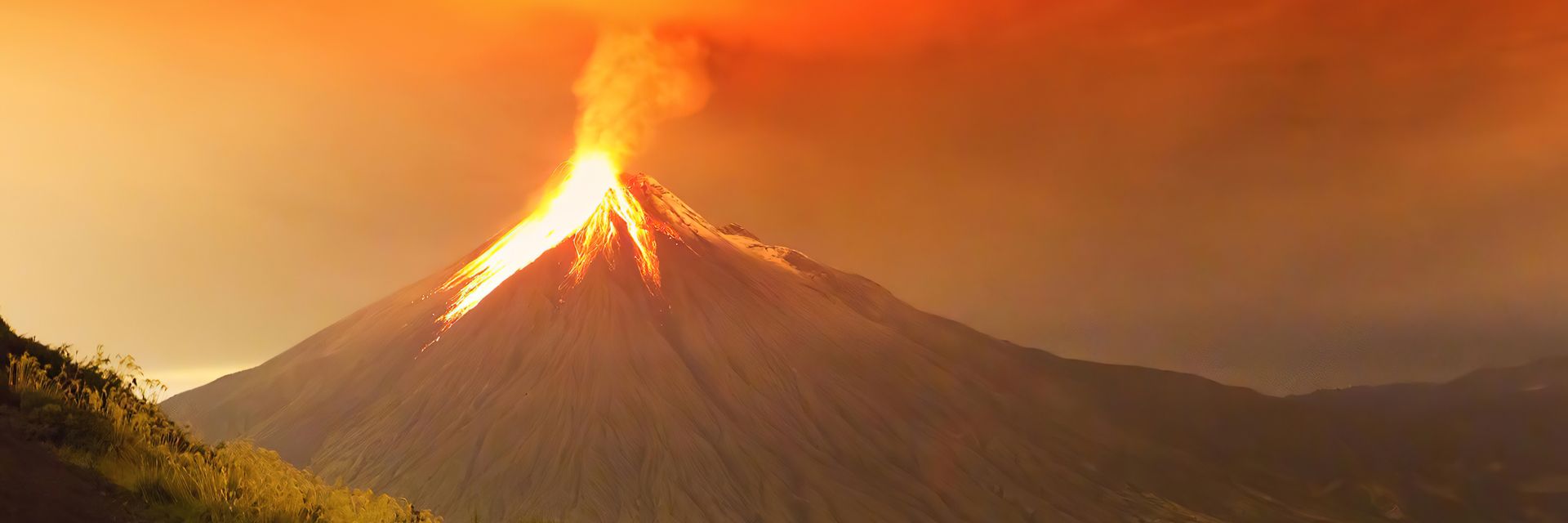Volcanoes are among the most awe-inspiring natural wonders on Earth. Their immense power and unpredictability have led to some of history’s most catastrophic events.
◊
Over the centuries, volcanoes have fascinated and terrified the people who live near them. They have inspired spiritual awe as well as great works of art and literature. But volcanic eruptions have also destroyed entire cities, impacted global climate, and left enduring legacies of destruction and devastation.
Let’s take a look at the five most destructive volcanoes on record.
Check out the MagellanTV Original Documentary Earth’s Most Destructive Super Volcanoes.
Mount Tambora (1815)
Mount Tambora is located on the Indonesian island of Sumbawa. When it erupted in April 1815, you wouldn’t have wanted to be anywhere nearby. The explosion was so massive that you could have heard it over 1,200 miles away, and you would have experienced its effects halfway around the world. The eruption ejected an estimated 38 cubic miles of material into the atmosphere, causing global cooling and crop failure. The following year, known as the “Year Without a Summer,” saw frost and snowfall in June in the northeastern U.S. and Canada. The event also caused tsunamis and other secondary disasters that killed an estimated 71,000 people.
Krakatoa (1883)
Located on the Pacific Ocean’s seismic “Ring of Fire,” Indonesia is a hotbed of volcanic activity. In August 1883, a small volcanic island between Java and Sumatra was the site of one of history’s most legendary disasters: the eruption of Krakatoa. Heard over 2,000 miles away, the volcano ejected an estimated 12 cubic miles of ash, dust, and other debris into the atmosphere, and set off tsunamis that killed an estimated 36,000 people. It also resulted in cooler temperatures around the world (not to mention months of spectacular sunsets).
Mount Vesuvius (79 CE)
“Live dangerously. Build your cities on the slopes of Vesuvius.” Or not, unless you are tempted by the advice of philosopher Friedrich Nietzsche. Surely the most famous eruption in recorded history occurred when Mount Vesuvius, on the coast of Italy’s Gulf of Naples, blew its stack in 79 CE. As many as 10,000 - 25,000 people died when the Roman cities of Pompeii, Herculaneum, and Stabiae were destroyed. Today, Pompeii’s ruins are among the most popular tourist destinations in the world, as well as being a treasure trove for archaeologists and historians.
Mount Pinatubo (1991)
If you think that major volcanic eruptions are a thing of the distant past, you are mistaken. In fact, they can happen at any time. A case in point is the most destructive eruption of the 20th century: Mount Pinatubo in the Philippines. The event, which lasted nine hours, produced an ash column that rose over 20 miles into the atmosphere. As with other major eruptions, the resulting ash and dust had a significant impact on the climate. The disaster also caused lahars, or volcanic mudflows, that killed an estimated 800 people.

Aftermath of Mount Pinatubo eruption (Credit: Willie Scott/USGS via Wikimedia Commons)
Tambora Volcano (1812)
No, you’re not seeing double. Before the massive eruption of Mount Tambora in 1815, which is recounted above, the volcano was the site of another major event only three years earlier. The 1812 eruption was also very explosive, producing pyroclastic flows and a massive ash column. And, this precursor to the later eruption released huge amounts of dust and ash into the atmosphere, and caused a year of reduced crop yields and famine in the region.
All of these five “towers of terror” are categorized as composite volcanoes. (Other types include shield volcanoes and cinder cone volcanoes.) They represent some of the most historic catastrophes the world has ever known and, like other natural disasters, remind us of the sheer power of nature and the importance of understanding and respecting it.
Ω
Title Image via Ready.gov

